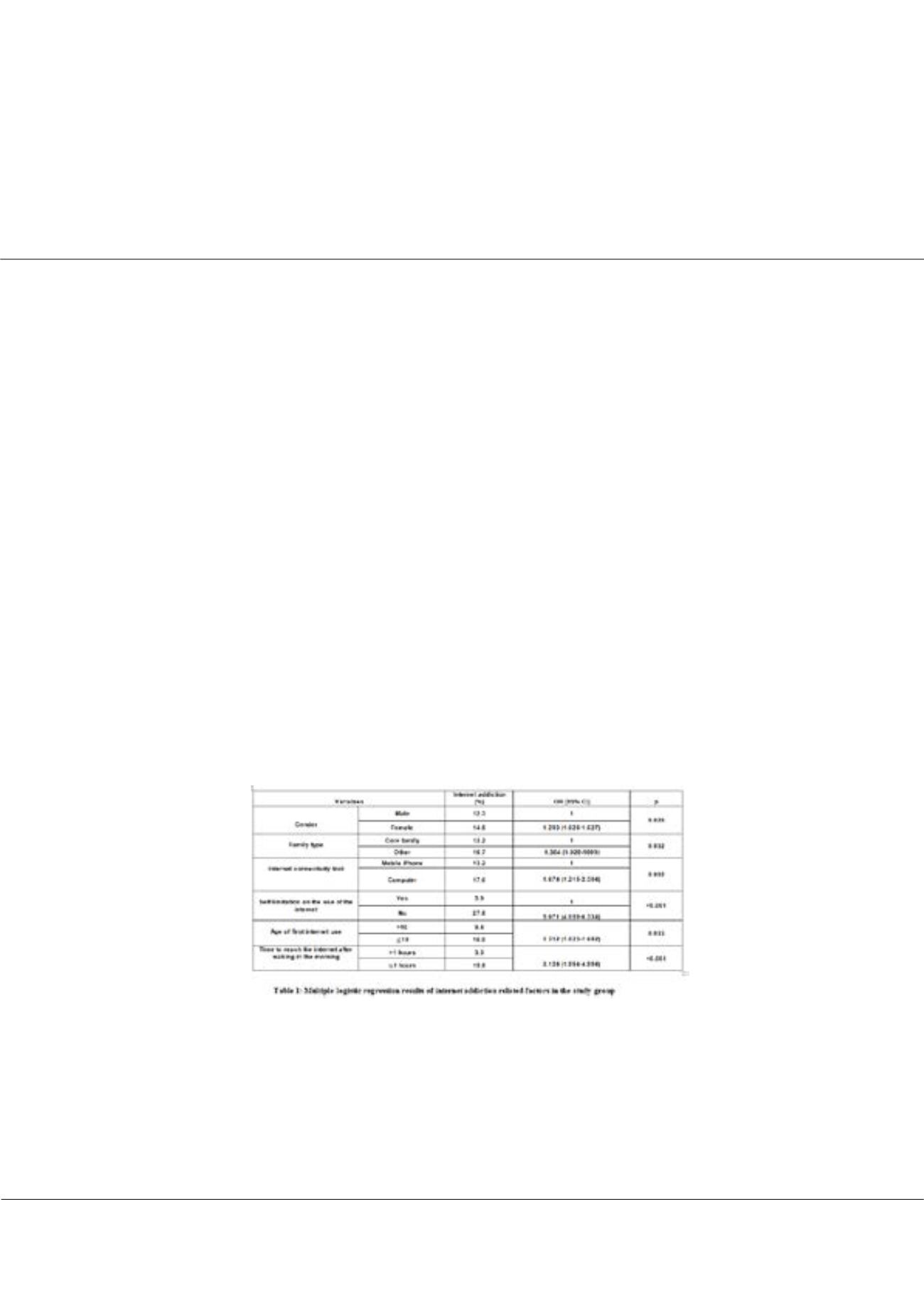

Page 68
conferenceseries
.com
Volume 8
Epidemiology: Open Access
ISSN: 2161-1165
Epidemiology 2018
September 17-19, 2018
September 17-19, 2018 | Rome, Italy
8
th
International Conference on
Epidemiology & Public Health
Evaluation of internet addiction and related factors in adolescents
Ramazan Saglan, Saniye Tulin Fidan, Muhammed Fatih Onsuz
and
Selma Metintas
Eskisehir Osmangazi University, Turkey
Statement of the Problem:
Adolescents have become a major population of Internet users. While Internet use is rapidly
spreading, internet addiction becomes a serious problem in adolescents who have not yet completed their physical and
psychological development. The aim of this study was to determine the frequency of internet addiction and related factors in
adolescents.
Methodology:
The study is a cross-sectional study performed on high school students in Eskişehir (Turkey) in 2017. Ethical
and administrative permissions were got for the study. In the study, multi-stage cluster sampling method was used according
to settlement units and school types. In the sampling schools, a total of 3,468 students who agreed to participate in the study
formed the study group. The Young Internet Addiction Scale was used to assess Internet addiction. Logistic regression analysis
was performed to determine the independent variables associated with Internet addiction.
Findings:
Of the study group, 44.2% were male and the age of the study group ranged from 14 to 18 years and the mean (SD)
was 15.89 (1.20) years. The frequency of internet addiction among students was found 13.7% (n = 474). In a multivariate
analysis, the risk of Internet addiction was higher among women (OR: 1.293), not living in core families (1.364), connecting to
the internet via computers (1.674), who reported that they could not limit themselves to using the Internet (5.071), who were
10 years old or younger at the age of first internet use (1.312) and who reached the internet within the first hour after waking
up in the morning (3.124) (for each; p≤0.05).
Conclusion & Significance:
Internet addiction is an important health problem in adolescents. Internet addiction can be
avoided by educating adolescents on the control of the internet and preventing children from using the internet in their at an
early age by their parents.
Recent Publications:
1. Bayraktar, F. 2001. 'İnternet kullanımının ergen gelişimindeki rolü (Yüksek lisans tezi, Ege Üniversitesi, Sosyal Bilimler
Enstitüsü, İzmir)', UlusalTezMerkezi/tezSorguSonucYeni. jsp adresinden edinilmiştir.
2. Ko, C-H, J-Y Yen, C-F Yen, C-S Chen, and C-CChen. 2012. 'The association between Internet addiction and psychiatric
disorder: a review of the literature', European Psychiatry, 27: 1-8.
Ramazan Saglan et al., Epidemiology (Sunnyvale) 2018, Volume 8
DOI: 10.4172/2161-1165-C1-020
















